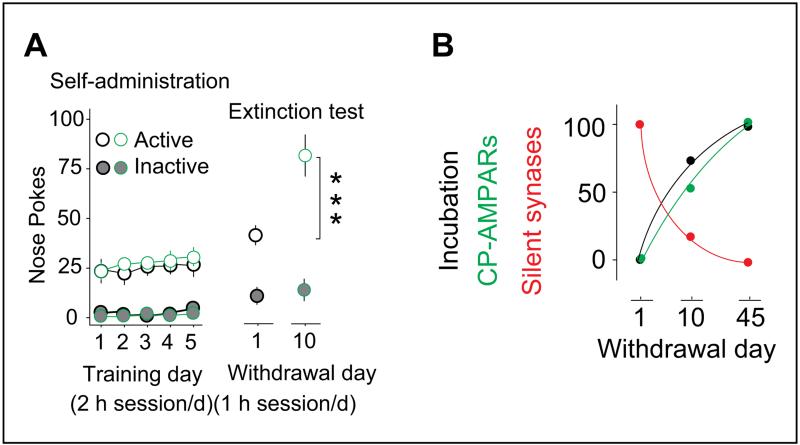Figure 3.
Maturation of BLA-to-NAc silent synapses correlates with incubation of cocaine craving. (A) Summarized results show that rats are subject to a 5-day cocaine self-administration regimen acquire stable drug taking. After abstinence, cocaine-associated cues (without cocaine infusion) elicit cocaine seeking on withdrawal day 1 and day 10, and this cue-induced cocaine seeking becomes increasingly intensified over the period of withdrawal (right). (B) Diagram showing that over the 45-day withdrawal period, cue-induced cocaine seeking becomes progressively increased. This intensification process is correlated with a progressive increase in CP-AMPARs and a progressive decrease in silent synapses. Data are normalized by setting the withdrawal scores to 0% and withdrawal day 45 score to 100%. n values are presented as the number of neurons/number of rats sampled. ***P < .0001. This figure is modified from Lee and others (2013) with permission from Nature Neuroscience. BLA = basolateral amygdala; CP-AMPAR = calcium-permeable α-amino-3-hydroxy-5-methyl-4-isoxazole propionic acid receptor; NAc = nucleus accumbens.

